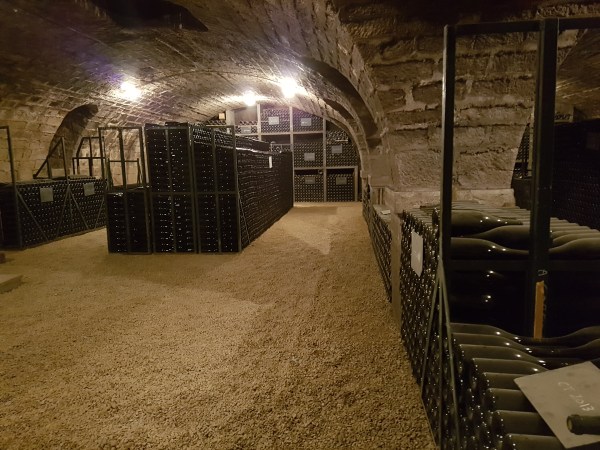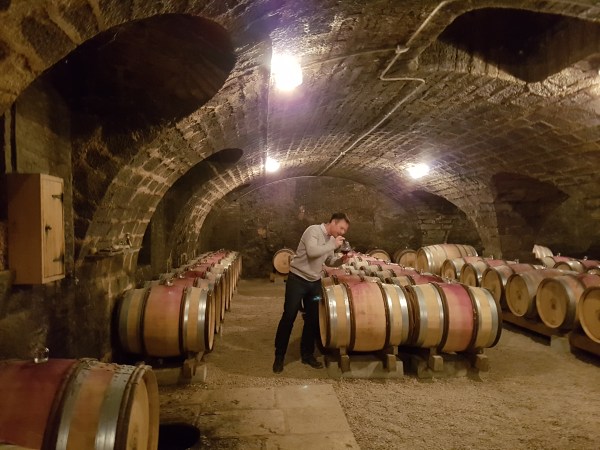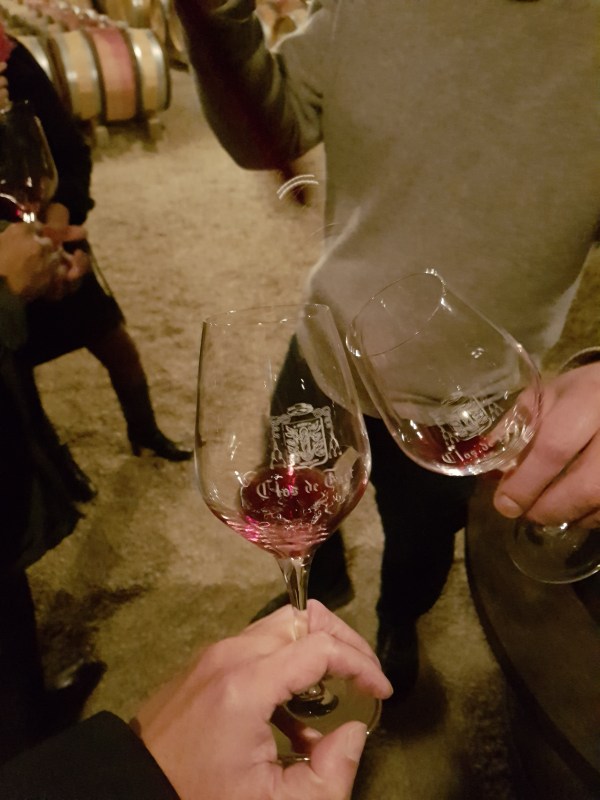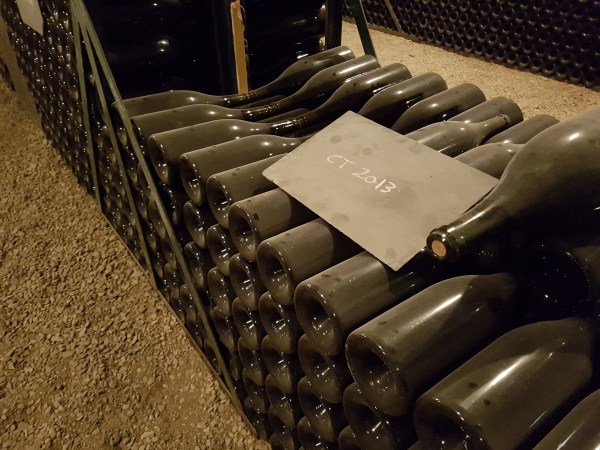Understanding Domaine du Clos de Tart
Our visit on the morning of 22 November 2017 to Domaine du Clos de Tart must surely rank as the finest wine educational experience ever. Occupying just 7.5 hectares sandwiched between Bonnes-Mares to the south and Clos des Lambrays to the north, Domaine du Clos de Tart has changed ownership only four times in its 900-year history, the most recent being just three weeks ago when the Mommessin family sold out to M. Francois Pinault (owner of Chateau Latour). However, I am pleased to report that business remains as usual at this monopole estate as we stepped through its famous red oriental doors where we were welcome by M. Jacques Devauges, installed as its Technical Director only three years ago. Genial, friendly and bubbling with quiet confidence and energy, Jacques is certainly the right person to bring the wines of this famous estate, already so highly esteemed and limited in quantity, up another few more notches as he exuded great knowledge about the estate. Trudging up to the vineyard (otherwise not quite visible from the road), it is wonderful to see the entire clos (wall) surrounding the rows of vines sloping gently upward, all planted in north-south orientation after the phylloxera devastation, facilitating even exposure to both the morning and afternoon sun. Apart from Clos de Tart, only five other vineyards in Burgundy are oriented likewise: neighbouring Clos des Lambrays, La Romanee, La Tache, Cros Parantoux and La Grand Rue. Therefore, it is not surprising that some of the very best wines of the Cote de Nuits come from these hallowed plots. The average age of the vines at Clos de Tart is about 60 years, divided into 27 subplots and vinified separately as 8 different cuvees before they are finally blended as the final Grand Cru. It has to be done this way as the subsoil is different from area to area, starting as shallow stony soils at the base (ie. easterly most) to deeper marl at the opposite extreme (ie. westerly most) where the wall stands. Coincidentally, Jacques tells us that the wall happened to be built along the natural geological fault lines of the slope, beyond which the soils are much harder, impeding root penetration. A continuous program of replanting takes place regularly where vines that are past their prime are replaced. Presently, the three youngest plots were replanted in 1999, 2005 and 2011.


Following this, we moved down to the cool cellars below where precious barrels of the 2016 and 2017 lie undisturbed at a constant temperature of 12ºC with 80% humidity. The yields at Domaine du Clos de Tart are below 35 hectolitres, which translates into 20,000-25,000 bottles per vintage. Eight cuvees, each representing certain terroir characteristics of the vineyard, are vinified per vintage.
We proceeded with the barrel tasting of the 2016 vintage. First was Cuvee #8, made from three subplots containing the youngest vines as mentioned earlier, planted in 1999, 2005 and 2011. This young cuvee is not included in the Clos de Tart Grand Cru, but bottled separately as La Forge de Tart. Light ruby, the 2016 La Forge de Tart exuded youthful forward characters of raspberries and red fruits, displaying great freshness, purity and precision with fabulous acidity, already seamless, a wine of excellent power, length and elegance. Already complete in itself. As these three subplots happened to be derived from diverse parts of the Clos de Tart vineyard, the La Forge de Tart, rightly, is not a “second wine” but ought to be considered as a young Grand Cru. This insight, to me, is absolutely fascinating.

Next was Cuvee #3, from vines located northwards at the lowest part of the vineyard, nearer Clos des Lambrays. This cuvee exuded some earthiness and smoke with fragrant raspberries and gentle currants, showing good delicacy, excellent linearity, very fine presence and acidity, finishing with traces of herbs that added an extra dimension.
In contrast, Cuvee #1, also from the lowest part of the vineyard but southwards, nearer Bonnes-Mares, proffered a softer bouquet, showing good balance between fruit and minerals with traces of smoke. Cuvee #5, coming from mid-slope that has a warmer micro-climate with white soils, exuded red fruits, cherries and roses of fabulous intensity, highly supple with wonderful purity, acidity and concentration all the way to its lengthy finish. Absolutely lovely.

And so how will the 2016 grand vin taste like if we blend all the cuvees together? This was exactly what Jacques proceeded to do, blending all seven cuvees (sans Cuvee #8 which contained vines that are still too young) in equal measure. The hypothetical 2016 Domaine du Clos de Tart Clos de Tart Grand Cru is a wine of outstanding purity and elegance, imbued with vibrant red fruits and cherries with various shades of light and dark, infused with fabulous acidity, elegant intensity, lovely length and wonderful depth, engulfing one totally in its living presence. You never feel the tannins even though they are there. At only 12 months old, and still in barrel, the 2016 Domaine du Clos de Tart Clos de Tart Grand Cru is already a complete wine, sensual and beguiling. Truly the drops of God. But Jacques knows better. The world will await with bated breath until it appears in bottle in 2019. This has truly been a masterclass to end all masterclasses. Thank you very much, Jacques, for giving us so much of your time and to FICOFI too for making possible the visit.